







P. 48
Is College Still Worth It?
P. 56
Advice From a Recent College Grad
P. 57
Timeline to Success
P. 60
A Local Kid’s Guide to Surviving College
P. 62
Preparing for College in High School

ON THE COVER ILLUSTRATIONS: HAILEY AKAU











P. 48
Is College Still Worth It?
P. 56
Advice From a Recent College Grad
P. 57
Timeline to Success
P. 60
A Local Kid’s Guide to Surviving College
P. 62
Preparing for College in High School

ON THE COVER ILLUSTRATIONS: HAILEY AKAU





Designed especially for Hawai'i students and their families, our Hawai'i Guarantee offers incoming freshmen the same annua l undergraduate tuition rate as the University of Hawai'i at Māno a and an achievable path to graduate in four years.
Small class sizes, experienced professors, state-of-the-art facilities, individualized academic advising and wraparound support—see how a valuable Chaminade education comes at a value.

FAFSA opens December 1. Include Chaminade University code: 001605

Learn more at chaminade.edu/hawaii-guarantee


READY TO TAKE THE NEXT STEP IN YOUR EDUCATIONAL JOURNEY? Whether you’re seeking career advancement or a second career, Chaminade is here to help you achieve your goals—with graduate degrees specifically designed to meet the needs of busy professionals. From business entrepreneurs to changemakers in criminal justice and education to skilled leaders in nursing and mental health, we’re proud to prepare innovators who will serve Hawai'i communities.
Learn more at chaminade.edu/graduate





Costs are sky-high, but administrators at schools popular among many Hawai‘i high school graduates say higher education gives students a valuable edge.
BY NOELLE FUJII-ORIDE | ILLUSTRATIONS BY HAILEY AKAU

IS COLLEGE STILL WORTH IT? Increasing tuitions and rising student debt continue to fuel national debate about the value of postsecondary degrees.
Average U.S. college costs, including full-time tuition, fees, and room and board, have increased by 14% over the past 20 years, according to the U.S. Department of Education’s National Center for Education Statistics. Only 47% of American adults say those higher costs are worth it, provided students or their families don’t have to take out loans to pay for it. That rate decreases to 22% if a loan is needed, according to the Pew Research Center.
We spoke with administrators and admissions counselors at colleges that are popular among many Hawai‘i high school graduates, as well as with a college and career counselor at Campbell High School, the largest public
high school in the state. Their unanimous verdict: College is still a worthwhile investment. Research has long touted the college wage premium, in which the average four-year college graduate earns 65% more than the average nongraduate. Rigorous instruction gives college students the technical expertise and discipline they’ll need for their careers. But the administrators and counselors we spoke with say the soft skills that students develop are also noteworthy. College, they say, provides a unique environment where students can connect with others from around the world, engage with diverse perspectives, practice democracy and challenge themselves.
“Going to college is not just about receiving the academic knowledge; it’s about growing in all the ways a human can, and being a better version of themselves tomorrow than they were today or yesterday,” says Armen Sarkisian, director of first year admission at Chapman University.
It can be a shock to learn that the average annual cost of attending a public college full-time is $20,000 (and that’s for students who are residents of the state); for private colleges, it’s $49,000. But there’s a difference between a college’s sticker price and what students will actually pay. Nationally, more than 85% of full-time undergraduate students receive some type of financial aid, lowering actual costs.

It’s important for students and their families to look beyond that sticker price and consider whether merit scholarships, need-based gifts or financial aid could help, Sarkisian says.
In the early 2000s, Chapman University’s presidential scholarships reduced the cost of yearly tuition there by $20,000. These scholarships are now worth $40,000 to account for higher tuition.
For context, the total cost of attendance at Chapman, including tuition, fees, room and board, travel expenses to and from home, and spending money, is about $87,000 per year, Sarkisian says. Back when he attended the California campus in the early 2000s, the total cost was about $30,000.
“There’s obviously all these big concerns and tuition continues to go up, and is it the next bubble, is education the next bubble, and for how long can these tuition increases continue to be sustained?” Sarkisian says. “But there are major efforts across the board at most institutions in the U.S., especially in the private sector, where we are trying to offset those increases to provide access to students by fundraising and having operations driven from endowment resources.”
GRACE
LENORE ROGERS
Senior, Emerson College
GRACE LENORE ROGERS, A KALĀHEO HIGH SCHOOL GRADUATE, was set on double-majoring in musical theater and education with the goal of becoming a performing arts educator at a public school. She was drawn to Emerson College because it had a specific major that combined her two career interests: theater education and performance. Although she initially was interested in other schools, Emerson proved the perfect fit for her because of its robust student-run arts community, where students initiate and pursue projects such as original plays and musicals, script readings and student-directed films.

UH’s board of regents froze undergraduate tuition at UH Mānoa for academic years 2023-24 and 2024-25. UH also waived its application fees for Hawai‘i residents applying to any of its campuses. For the current school year, the annual full-time tuition at UH for residents is $11,304; with additional expenses such as books, room and board, and transportation, the estimated total cost is $32,316.
“We’ve been taking a really close look at things that can often be barriers to higher education, the application fee being one of them,” says Nikki Chun, vice provost for enrollment management at UH Mānoa. “And I think that’s what also opened the doors for a lot of our Hawai‘i residents to be like, ‘Oh, well, I mean, you know, if it’s free,’ and that’s what we needed. Honestly, we just needed them to apply. And once they applied, we just found that there were so many more qualified students to admit.”

“Everyone [at Emerson] is so passionate about what they are doing,” she says. “There’s something really special about the art that we make together.”
The 20-year-old senior says Emerson gave her the opportunity to grow as a person, in ways she couldn’t while living at home. Growing up as a military kid, she had moved around a lot and found it difficult to connect with her high school
classmates. But her heart is now in Boston, and she says the friends and memories she’s made there are invaluable.
She advises high schoolers just starting the college application process to focus on schools that fit them and their passions rather than getting caught up in prestigious names and acceptance rates. “The lists of ‘top best schools’ don’t mean anything,” she says. “You can go to the best school in your industry, but if it doesn’t work for you, it’s not right. I think it’s really important to tour schools (if you can) and talk to current students and alumni to really feel the vibe. It’s so much more important to find a school that fits your wants and needs and your goals in life.”
—Hailey Akau
The campus also offers accepted in-state students merit scholarships of up to $4,000 a year if they have GPAs of 3.0 or higher.
Sarkisian says he tells students that, “I wouldn’t do the work I do and talk about Chapman the way I do if I generally didn’t think we were worth what our sticker price is. I feel wholeheartedly that we deliver to that value of providing an experience, not just in education and academic knowledge, but a full experience that lives up to that total cost of attendance.”
Part of what makes college degrees valuable is that they retain their worth over time. Eleyne Fia, a college and career

Taking the Leap
ISSIAH ANGEL SCARBOROUGH
Senior, University of Oregon
IS SIAH ANGEL SCARBOROUGH WAS BORN IN TEXAS BUT RAISED IN HAWAI‘I, growing up at Schofield Barracks while his father was deployed overseas. Although he always thought he would follow his father’s military path, he realized while attending Saint Louis School that he could forge his own way.
counselor at Campbell High School, says degrees demonstrate to employers that young adults have the required technical knowledge and can interact with others, communicate well and finish what they start. Certifications, by comparison, generally need to be renewed every so often, such as when new technology or methods become available.
To help justify the cost of tuition and fees, she encourages her students and their families to remember that college is about more than just the classes. Students have access to tutors, career centers, job fairs and internships where they can learn about their interests, talk with hiring managers before applying for open jobs and get real-world experience. Campuses commonly provide low-cost health services, host visiting scholars and musicians, and more.
Among the “more,” Fia points to study-abroad programs, “where you’re able to stay in another country and live and learn.”
“Where else,” she asks, can young adults have that opportunity, at that price? “It’s all included in what you pay for, all those services on that campus.”
CONTINUED ON PAGE 52
The 22-year-old senior is now poised to be the first person in his family to graduate from college, something he is proud of and believes will lead to expanded career opportunities.
He says being independent as a child gave him the confidence to even apply. The University of Oregon landed on Scarborough’s radar after he received personalized recruiting mail from the school with the correct spelling of his first name. He says it made him feel like he was more than just a number or someone who could meet a quota. “They made me feel like I belonged there,” he says. “I felt almost like I had an attachment to [the University of Oregon] even though I’d never been there before.”
He graduated from high school in 2020 at the peak of the COVID-19 pandemic, making his senior year far from normal. But the university, Scarborough says, did everything it could to make his decision easier, through letters, Zoom calls and even sending cardboard VR glasses so he could virtually tour the campus.
Scarborough, now in his fifth year at the university, started out as an architecture major but switched to a double-major in finance and marketing and cinema studies. Film was always a big interest, but he wanted to explore both of his passions to determine which might ultimately lead to a career.
“My biggest advice to high school students would be to find that balance of being comfortable and uncomfortable,” he says.
If he hadn’t taken the risk of leaving his family and going to Oregon, he says he would have missed out on valuable work and learning opportunities that he believes have set him up for a solid career and future. —Hailey Akau



(2024–2025 School Year)
$11,304
In-state tuition (includes Native Hawaiian nonresidents, active duty military and other exemptions)
Given the state of the economy, school officials say students want to know how a college degree will help them enter the workforce and be competitive once they’re there. And they’re asking questions about how they can develop practical skills and whether campuses offer hands-on opportunities for them to apply their knowledge in supportive, real-world settings.
$33,336
Nonresident tuition

KELSEY YOSHIOKA
Junior, University of Hawai‘i at Mānoa
BORN AND RAISED ON O‘AHU, KELSEY YOSHIOKA SAYS she always intended to stay on-island after graduating from ‘Iolani School, and she credits her parents for motivating her to go to college. “I know [my parents] made a lot of sacrifices to send me to ‘Iolani,” she says. “I really wanted to make sure I could get a good
$16,956
Western Undergraduate Exchange rate
$16,956
Pacific Island Exemption rate
“There’s a lot more pressure and a lot more anxiety around not only getting into college, but getting into the major and getting into a field that will benefit them economically,” says Ed Taylor, vice provost and dean of undergraduate academic affairs at the University of Washington.
Educational leaders for years have encouraged youths to pursue science, technology, engineering and math careers. That’s led to an unintended consequence of placing higher value on those types of programs. Taylor says he’s seen many students pursue STEM majors for that reason, rather than following their hearts. He adds that UW now goes further to articulate to students the value of its various degrees and how they can translate into career opportunities.

degree to set me up for a job with a solid income.”
Knowing the high expense of higher education, the 20-year-old nursing student considered her family’s finances when deciding on which college to attend. Although she considered some West Coast schools, she ultimately enrolled at UH Mānoa. She says she had always been interested in health care and knew that UH’s program could offer her a fulfilling learning experience and local networking opportunities.
Her rigorous course load was overwhelming at first, but she says it forced her to mature and kept her on track. “It’s definitely been helpful for networking, and there are so many young nurses who have taught me a lot and helped me sort of toughen my skin in the industry,” she says.
This past summer, she was selected for an internship with Hawai‘i Pacific Health, giving her firsthand health care experience. She was able to rotate among different departments to see different parts of the industry. “I really feel like I’m on the right track to a steady income and good future,” she says, “which is definitely why I think college is worth it. Even if you have to take things at your own pace or take a break from school, I still think that an educational foundation for your career is important.” —Hailey Akau






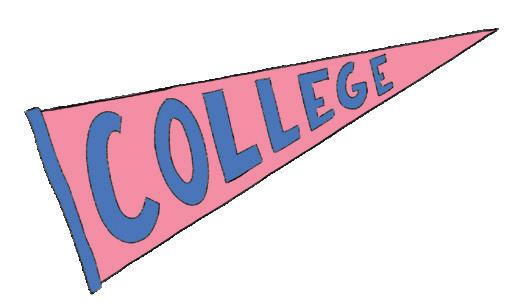
Also, several of the administrators we spoke with say their colleges have increased opportunities for hands-on learning, such as through student research. About 6,700 undergraduate students at UW, for example, participated in nearly 1.3 million hours of research with faculty mentors during the 2022-23 academic year.
“We have found that students that engage in research with their faculty, they are … least likely to get lost in university, that they actually deepen their commitment, they deepen their knowledge,” Taylor says.
Michael Bruno, provost of UH Mānoa, says the campus now engages hundreds of students annually in its Undergraduate Research Opportunities Program, which provides funding and faculty mentors. Projects have included investigations into the issues faced by Micronesian migrants living in O‘ahu public housing projects and more.
Prospective college students also look for whether campus equipment, labs, facilities, academic programs and resources are up to date. Chapman University has invest-


ed more than $1 billion in its facilities over the past 20 years, Sarkisian says. The college has also added several high-ranking faculty members to its staff and invested in student services.
“You can see it’s palpable. You walk our campus community and you can feel that the university has been very thoughtful about the investment in these spaces to deliver the opportunity for students to have our mission meet their experience,” he says.
UH Mānoa has several renovation projects underway, including a $57 million state-of-the-art Student Success Center. The center will house 30 conference rooms, a computer lab, a student store for food and beverages, the campus’ esports team, and digital studios for the College of Social Sciences. UH Mānoa is also creating more outdoor studying and gathering spaces as a result of student feedback.
The campus has also changed up some of its academic offerings, including adding new programs to its School of Cinematic Arts and a new undergraduate degree in sustainability, Bruno says.
Join a student club. Help a faculty member with research. Get involved with student government. Join an intramural sports team. Getting involved is one of the

If you’re a 2025 graduate of a Hawaiʻi high school and have a cumulative GPA of at least 2.75, HPU offers you:
• Guaranteed admission to Hawaiʻi’s premier private university if you submit your application by January 15, 2025.

• Guaranteed $15,000 scholarship, at minimum – your aid package may be greater depending on financial need and/or academics.





best ways students can maximize their college experiences, according to college administrators.
And it paves the way for students to make friends and meet people from all over the world. The University of Nevada-Las Vegas has more than 420 student clubs and organizations, with students from all 50 states and more than 85 countries, says Woody Hoshibata, a senior regional recruiter there. He says students shouldn’t be afraid to be vocal about what they want. If they want to work with a specific faculty member, they can show up at that faculty member’s office and say, “I’m interested in what you do. How can I learn about that, or how can I get involved?” They can also speak with their campus’ academic advisers for guidance, he says.
And it’s best to get involved as early as possible. Sarkisian recalls running into a Chapman freshman from Hawai‘i a few years ago. While it was only the second or third month of school, she was already engaged in research with a faculty member. He says getting involved early is akin to earning power.
“By the time they graduate, you look at their résumé and you hear them talk about what they did during their college time, and you’re like, ‘How did you do that in four years?’” he says. “And really what it amounts to is they’re entering the real world with a very impressive skill set and experience set that is usually going to outpace most of their peers.”

FAFSA forms become available. The online FAFSA application must be submitted by 11:59 p.m. Central time on June 30, 2025. However, many colleges will require this earlier. Complete the CSS Profile to find more scholarship options. Hawai‘i Community Foundation also opens its scholarship application process. Check hawaiicommunityfoundation.org for updated deadlines.
The deadline for financial aid applications at most colleges.
Many colleges send out acceptance letters during this month.
Many colleges require that you reply with your intent to enroll by this date.


E KŪLIA I KA NU‘U KĀKOU!
Realize your dreams and reach for the sky with the support of Kamehameha Schools and Pauahi Foundation college scholarships. With a commitment to helping Hawaiian learners strive for excellence at every stage of their educational journey, our college scholarships create opportunities that empower haumāna to grow as ‘ōiwi leaders and reach their full potential.
Learn more and apply at ksbe.edu/college



Working for my college’s student newspaper set me up for the future.
BY HAILEY AKAU
IWANTED TO TRANSFER SCHOOLS
DURING MUCH OF MY TIME AT COLLEGE. The social and academic environment at Emerson College, a liberal arts school in Boston, felt too different from my high school, ‘Iolani. I initially majored in theater, and despite being an artsy type in high school, I felt out of place in the program. The academics weren’t as rigorous and structured as they were at ‘Iolani, and I wasn’t as interested as my gung-ho classmates in creative pursuits like self-produced films, art projects and comedy troupes.
Despite switching majors to writing, literature and publishing during the second semester of my freshman year, I still felt isolated and disconnected from the Emerson community. I had a close-knit group of friends and joined a few performing arts clubs, but I wasn’t inspired or motivated by my courses.
At the time, two of my friends worked on the school newspaper, spending every Wednesday evening writing and reporting stories for the Berkeley Beacon. Knowing I was a writer and illustrator, they encouraged me to pitch stories and graphics. So, in the fall of my sophomore year, I joined the staff, which transformed my whole college experience.
Now, my evenings were spent reviewing “suggested edits” on Google Docs and creating digital illustrations, and there were weekly meetings to attend. The Beacon staff was committed to producing quality journalism, and the newsroom, entirely run by

students, operated like a professional workplace. I was finally applying academic lessons to tangible work, and this hands-on experience furthered my understanding of journalism and publishing.
Every Wednesday, I looked forward to the weekly production night, when we’d finalize stories and lay out the print edition. I wrote my first bylined print piece at the Beacon and added both stories and artwork to my portfolio. The friends I made there also became the reason I stayed at Emerson. That’s not to say my time at the Beacon was stress-free. We had our share of controversies and errors, and we were even canceled by the student body over a few stories. But from all this, I learned about the nuances and reality of the media world.
Now, after graduating this past spring, I can say my biggest regret was not joining the Beacon sooner. Confronted by a turbulent job market and a scarcity of journalism jobs, I can’t say the classes I took at Emerson set me up well for a career of my choosing. If it wasn’t for my time at the Beacon, I would have little to show from my undergrad years, and I wouldn’t be in a position to land a journalism job. It’s the articles I wrote and the illustrations I created that best showcase my abilities, giving me a better shot at internships and jobs. The skills I honed, for instance, apply to pretty much everything I do during my internship with HONOLULU, and without my time at the Beacon, I likely wouldn’t be here.
There’s still so much uncertainty in my future, but I’m forging forward with a take-what-I-can-get mindset. I’m sure many other recent graduates can relate. Some of my friends and former colleagues now work for major news outlets, and hearing of their successes gives me a lot of hope.


Finding and getting accepted to the right college or university is actually a four-year process. That may sound daunting, but take each step one at a time and stay organized, and you’ll be fine. Here’s how to manage the road to college admission.
ILLUSTRATIONS BY HAILEY
AKAU
9th GRADE
Enroll in challenging classes.
Keep grades up.
Get involved in extracurricular activities.
Explore potential career paths.
Set up a college savings plan.
Develop good timemanagement skills.
10th GRADE
Try some AP classes.
Take a practice Preliminary SAT/National Merit Scholarship Qualifying Test (PSAT/NMSQT). Juniors qualify to compete for the National Merit Scholarship Program, but younger students can take it for practice. collegeboard.org/ psat-nmsqt
Consider volunteering or working part-time during the summer.
Visit campuses while traveling, just to get a sense of what type of college appeals to you. Small? Big? Public? Private?
In October, take the PSAT/ NMSQT (this year, testing may occur on any school day Oct. 1–31, as well as Oct. 14).
11th GRADE
Sign up to take the ACT or SAT. Colleges usually accept either one, but check with where you’re interested. Many students will take the test once as a junior and again as a senior. Is it worth taking it twice? According to ACT, 57% of 2015 graduates increased their Composite score on the retest. Test scores can also impact academic scholarships, so consider taking them even if your schools don’t require them.
Visit campuses if possible.
Attend college fairs and network with the college representatives.
Draft your essay during the summer before 12th grade so there is enough time for at least two people to read it and comment.
12th GRADE
Once the Common Application opens around August, create an account and start filling out your personal information.
In the fall, repeat the ACT/ SAT tests. Send in scores.
Gather teacher and other personal recommendations. Send thank yous afterward!
Narrow down the list, but have at least four to eight schools to apply to.
Check all due dates at the colleges you want to attend; they vary by institution and you don’t want to miss anything.

The nationally administered SAT tests reading, writing and math and is used to test how ready a student is for college. SAT Subject Tests and the optional SAT Essay are no longer offered by College Board. For more, go to sat. collegeboard.org/home
If you have been tested for dyslexia or attention deficit hyperactivity disorder or believe you may qualify for accommodations such as extra time, visit accommodations. collegeboard.org to learn more.
The ACT is a national college admissions exam that includes English, math, reading and science questions. The ACT Writing Test includes a 40-minute essay, which is required by some colleges and not others. In Hawai‘i, the state picks up the cost of taking the ACT for all public school juniors. To register, visit act.org
For all standardized tests, bring a current photo ID issued by a city/state/federal government agency or your high school, as well as printed test ticket and approved calculator. Don’t bring a cell phone, smart watch or even a fitness tracker to an SAT test; they are prohibited, and you will be asked to turn in these devices after check-in. ACT test sites allow phones if they are turned off and placed out of reach.
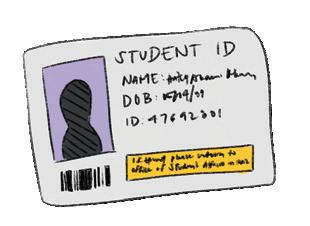
• • •
Flexible in-person and online classes to fit your schedule and learning style. Explore from over 120+ career focused programs
• Access millions in financial aid and scholarships so your education will be even more a ordable (or FREE!).








Transfer your credits seamlessly to four-year universities.


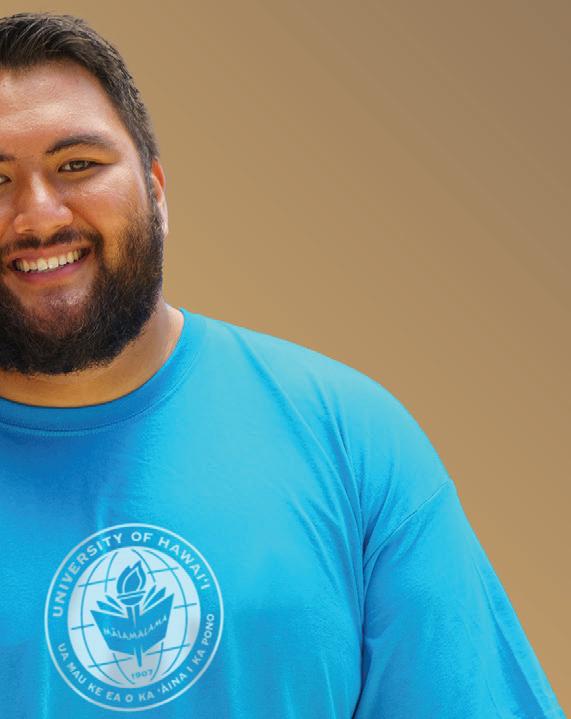
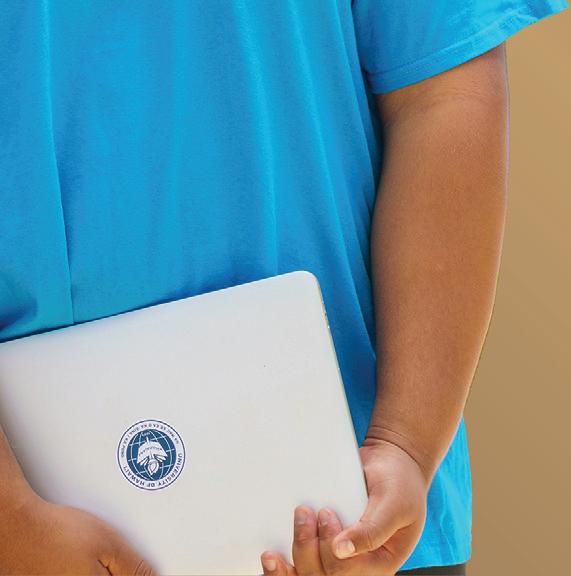

Since spring 2024, all students participate in SAT School Day digitally. Be sure to contact your counselor or principal to confirm when your school offers SAT School Day. Students must bring their fully charged laptop (Windows or MacOS), iPad or Windows tablet, or school-issued Chromebook device with the Bluebook app installed and exam setup complete before test day if testing on a personal device. If approved to borrow a device from College Board, you will need to arrive 30 minutes early for sign-in and setup. See bluebook.collegeboard.org/ students/approved-devices for more details.
Nov. 2
Register by Oct. 18; late registration until Oct. 22
Dec. 7
Register by Nov. 22
March 8
Register by Feb. 21
May 3
Register by April 18
June 7
Register by May 22
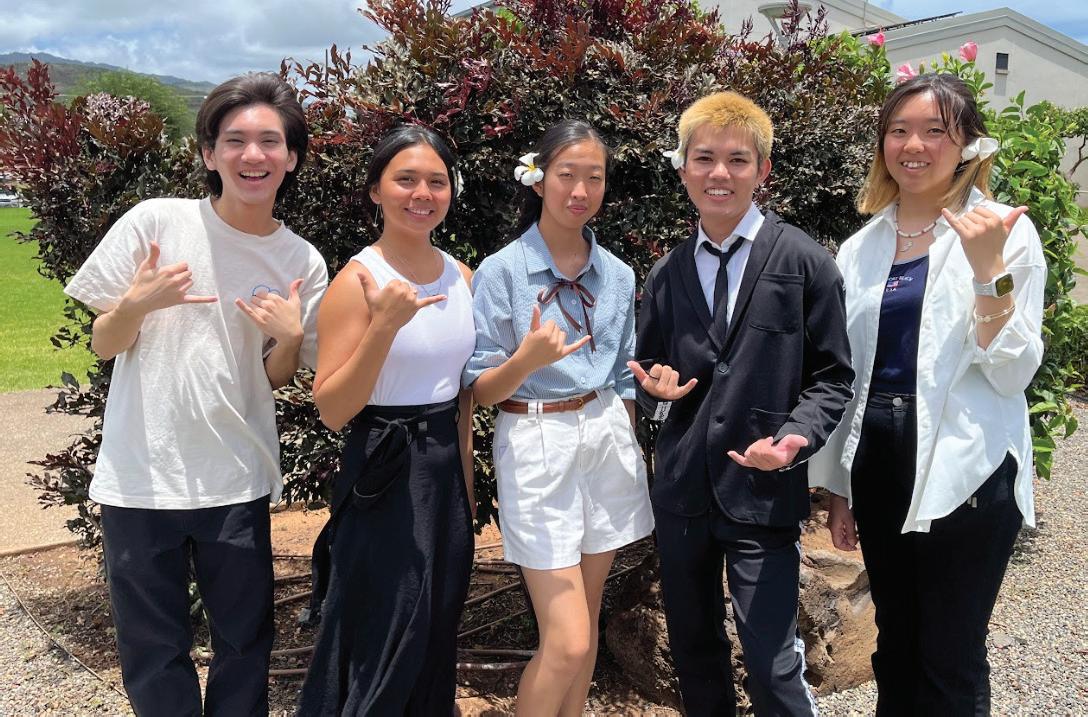

Oct. 26
Register by Sept. 20; late registration until Oct. 7
Dec. 14
Register by Nov. 8
Feb. 8
Register by Jan. 3
April 5
Register by Feb. 28
June 14
Register by May 9
July 12
Register by June 6
BY CASSIDY KEOLA, SHINAE LEE, EVE HUDDLESTON, EMILY SMITH, ALICIA LOU AND HAILEY AKAU | ILLUSTRATIONS BY HAILEY AKAU
1 Meet with your adviser every semester. Before choosing your classes, make sure that you meet with your adviser so they can help you build a schedule that will allow you to graduate within four years. Find your academic adviser with the school’s advising guide.
2 Before signing up for classes, check ratemyprofessors.com. Professors can often make or break a class and your GPA, so it is helpful to see what previous students have had to say. However, take it with a grain of salt, as reviews are often biased. Also, if you like a professor, consider enrolling in another course they’re teaching in the future. Building rapport with your professors is vital if you’re considering going to graduate school, but it can also make your college life a lot more enjoyable.
3 Don’t be afraid to change your major. You will be experiencing a lot of change and growth during your college years, and you might not like or want the same things you did in high school. Once you’ve thought it through and taken everything into consideration, it’s better to change your pathway sooner than further down the road. Consider taking your general education courses first to give you time to think.
4 Remember to check not just the times, but also locations of your classes. If you have back-to-back classes across campus from each other, will you make it? Try to take classes at the optimal times for you. If you know
you’re not an early bird, avoid those 7:30 a.m. seminars—or, if you know you get sleepy after lunch, don’t schedule a class right after you eat.
5 Interested in studying abroad? It might be difficult to find classes that meet your major requirements abroad, so save some of your core requirements to take abroad instead. It might be best to study abroad in your sophomore year so that you get acquainted with college life before switching to another new campus, but it’s important to work with your academic adviser to choose the right courses for your degree pathway. Make sure you keep track of application deadlines for different programs so you don’t miss any opportunities.
6 If you earned any college credits early (AP/IB/Running Start/Early College/transfer credits) make sure to submit your official scores and/or transcripts to your school’s admissions office at least a month before course registration, so those courses can be evaluated and you can receive official credit for them.
7 Look into CLEP testing for credits. College Board’s College Level Examination Program exams cost less than $100 per test and offer an alternative way to earn your general education credits. With more than 30 exam subjects, CLEP can help you save money, free up your schedule or graduate early, so be sure to review your school’s CLEP policy and consider registering for an exam at clep.collegeboard.org.

• Research public transportation. Bus or metro passes are often included in a university’s student fees, and your student ID will double as a bus pass, so don’t wait until classes start to pick it up. Even if you have a car, you might find public transportation to be more convenient.
• Check out the school shuttles. Many schools, like New York University and the University of Hawai‘i at Mānoa, have an app for free school shuttles that provides estimated shuttle times.
• Split rides with friends. Riding by yourself in an Uber or Lyft can be expensive and sometimes sketchy, so travel in groups. Students have access to Lyft’s Ride Smart Program, which offers college communities free or discounted transportation.
• Search areas near your school for free parking. Parking on campus might be convenient, but it can be costly, so if you’re commuting from far away, drive to areas like mall parking lots or safe neighborhoods nearby. Just be sure to give yourself enough time to go the rest of the way.
• Depending on the size of your school, you may want to invest in a bike, electric scooter or skateboard to shave off minutes when getting from one class to the next.


• Search the school’s job database. Campus jobs usually hire for the next year or semester, so more crop up near the end of term. Many schools also hold student job fairs, so keep an eye out for those notices.
• Check your emails regularly. Your school and the department you choose your major in will both send you emails regarding exclusive internship and job opportunities, so make sure to check them and apply to all your desired positions. Some schools split jobs into work-study, which are usually a school-sponsored position and a form of financial aid, and nonwork-study jobs, which are typically only available to students who do not need financial assistance.

1 If you’re heading someplace cold, it’s best to buy winter jackets there to save money and space in your suitcase. You also might want to see how much room you have in your closet first. Consider investing in a few storage bins that can fit under your bed, or store your winter clothes in your suitcase.
2 In many places, it will get dark around 5 p.m. during the winter. So consider buying a sun lamp or some fairy lights to hang in your dorm to fight those dark afternoons and seasonal depression.
3 Be the cool kid from Hawai‘i with all the ‘ono Hawai‘i snacks—Spam, furikake popcorn, li hing mui sour belts—and a rice cooker. Spread da aloha, and stock up on your favorites for when you get home sick.
4 If you’re lucky you’ll get a twin XL in your dorm, but most likely you’ll be stuck with a twin bed. Either way,
• Look for “help wanted” signs on and off campus. Go on a walk downtown and keep your eye out around campus. Some jobs might not be posted online. Restaurant jobs are usually a good way to get your foot in the door if you don’t have any prior experience, and they usually offer employee discounts for food.
• Walk into places where you want to work and ask if they’re hiring. Bring your résumé and leave it with them in case of an opening.
• If all else fails, the dining hall and the campus bookstore are usually easy places to get hired as a student.
college dorm beds are not comfortable. A mattress pad, however, is an easy fix.
5 Don’t forget about the little things, like office supplies, extension cords, nail clippers, bandages, etc. You won’t realize the necessity of small household items until you don’t have them. Consider putting together a first aid kit. You should also have supplies like staplers, tape, paper clips and more. You know your habits best, so take a look around your home and make note of everything you use.
6 Depending on your dorm regulations, consider purchasing a microwave and air fryer This way you can save money by making your own food and ditch the unhealthy options of eating out. But be sure to check if your residential hall has a communal kitchen first—there might be a stove, oven and microwave already provided.

Download an app such as Paypal, Venmo or Cash App. Every time you go out to eat with friends, come across a campus fundraiser or just need to pay your roommate for toilet paper, various apps and some banks let you do it instantly, so you can request and send money from a bank account. If you live with someone and often have split expenses, Splitwise is a free app that keeps track of everything and does the math for you so you’re not constantly sending money back and forth. Also, Unidays is a website that allows college students to get exclusive discounts on subscriptions, clothes, technology and more. Be sure to sign up with your college email to save some coin. myunidays.com

• Don’t go to the campus bookstore first! While it’ll be your No. 1 resource for school swag, the books are almost always pricier there.
• To clarify what books will be used in your class, contact your professors. Email them before the class starts so you have enough time for your books to come in. Some professors may even provide the text for free or change their syllabus, so don’t order anything until you’ve confirmed you need it.
• BookFinder.com and Chegg.com are incredible online resources—BookFinder compares prices of new and used books from more than 100,000 sellers, so you can be sure you’re getting the best deal, and Chegg shows you options for both renting and purchasing books, so you can see which one is better for you.
• Buying used textbooks is cheaper; plus you may find useful notes to help you ace the test. (Think of it as a free personal tutor.)
• Check Amazon for textbook rentals, or as another option for finding used books that are in good condition. Anyone with a school email address can start an Amazon Prime Student account for half the usual membership price, which comes with free two-day shipping and access to free movies and music. (Amazon also offers a six-month free trial.)

A student’s involvement sets the foundation for college acceptance— and beyond. Here’s how to build that foundation with strength and purpose.

BY KATHRYN DRURY WAGNER AND EMILY SMITH ILLUSTRATIONS BY HAILEY AKAU
CHESS CLUB. MOCK TRIAL. THE SCHOOL NEWSPAPER. CHINESE CLUB. VOLLEYBALL. Sign up for it all! Not so fast. It’s not the number of activities students do in high school that counts, experts say. Think quality over quantity. “And whatever you choose, do it consistently,” says Amy Prince, a school counselor at Southampton High School in Southampton, New York. “It’s what you’re engaged with actively. Somebody might do 40 hours of community service, but was it 40 hours over one week during a church mission, and the other 51 weeks of the year they did nothing?” Compare that to a student who volunteers with, say, Best Buddies, helping people with developmental disabilities, once a week, all year.
“When students can demonstrate they have had consistent involvement and that they are leaders within the organizations, we get excited about their potential to contribute positively on our campus,” says Mark Cortez, executive director of admissions at Stony Brook University. “This doesn’t have to just be school activities; we want students to think broadly about experiences like community opportunities and/or work experiences. They each add something a little different and that is what we consider.”
Students should seek out areas where they can take on leadership roles. “That doesn’t always mean being the president of a club or its founder,” says Prince. “What events did you organize? If you’re just listing on your application that you were a member—what does that mean to an admissions officer? Define your role. Now, in ninth or 10th grade, there aren’t a lot of leadership roles but, if you stick with it, if you rise up to captain or co-captain in an athletic setting, or treasurer or president in a group; this shows the qualities colleges are seeking within their own school’s population.”
Schools can tell from a mile away when an applicant is trying to build a résumé out of nothing, grabbing onto 15 random activities. If, on the other hand, a student is involved with Model UN and student government and Girls Learn International, the school can see a pattern and a purpose.
According to Prince, students should use ninth and 10th grade for experimentation, to find out what they are most interested in, and then home in. Re-

member that “colleges and universities have seniors graduating and need to fill leadership roles or spark something new,” Prince points out. For an athletic program, they may need a new quarterback; for an orchestra, a new cellist. “It’s not like they put an ad out: ‘Hey, we need a cellist,’ but it’s part of the thought process,” she says. “I think one of the reasons I got into the college I did, York College of Pennsylvania, was that I had been a DJ for a high school radio station and they had a radio station that needed a manager.”
Even though AP coursework is a great opportunity, again, think quality over quantity. Consider your strengths and your goals. For example, someone interested in engineering might not want to take AP literature, but, instead, explore an engineering program, even without an AP label attached to it. “Schools are trying to figure out: What drives the student?” says Prince. “If you want to be pre-med, and haven’t done well in science or math, maybe that’s not a realistic goal. That’s a student who is going to
change major.” Think about classes that are genuine passions, things that can extend into interests in college. Otherwise, Prince warns, “students become machines of cranking out grades and don’t find what resonates with them.”
Most schools require students to submit supplemental essays with their application, which can be a way for college admission officers to decipher whether you will be a good fit at their university. This is especially important now, as many schools are loosening their SAT requirements and taking a more holistic approach when reviewing applications. Recent graduates recommend focusing on telling the admissions officer about yourself, especially outside of academics.
Students should avoid giving in to senioritis, or playing what Prince calls “a game of academic chicken.” That’s when seniors try to find the line of how little effort they can put in. “It’s not a good game to play,” she says. “If you were a 90 student, you should stay a 90 student, even in senior year. Schools are still watching.” There is some wiggle room, of course. For example, if a student is challenging himself or herself with AP physics, he or she might not get a 90, and schools will understand that.
Your senior year will also be the time when colleges see if your grades have shown consistent growth. This upward trend gives grace to those who might not have gotten the highest grades but have improved over time.
“We encourage students to stay in a foreign language, and recommend electives. It’s free in high school!” says Prince. “Electives cost a lot of money in college. Take advantage. A lot of the AP and honorslevel kids haven’t gotten to take a lot of electives.”
Last, remember that being engaged doesn’t stop after college acceptance. “Once they get on campus we expect that students will be actively involved, as doing so contributes to their social and academic suc cess,” says Cortez. “As students work to discover their passions in college, they are doing this with [other] students who are diverse in majors, experiences and backgrounds. This discovery stage leads to rich expe riences where students can learn from those around them and, in most cases, benefit.”
